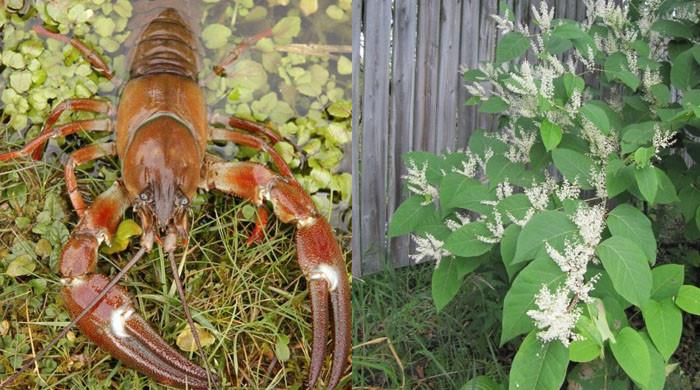Scientists are cautious of a London restaurant’s claims that consuming invasive species together with Japanese knotweed, American Sign crayfish, and gray squirrel might cease their damaging unfold.
The concept behind a number of “invasive species supper golf equipment”, the final of which was served on Tuesday at “zero waste” Silo restaurant in east London, is to “creatively popularise species which are detrimental to the setting”, chef Douglas McMaster, who runs the institution stated.
The omnipresent gray squirrels, American sign crayfish and Japanese knotweed are all “forces of destruction” that squeeze out native populations, however all are edible and “scrumptious”, he added.
The invaders are the topic of a not too long ago revealed report beneath the aegis of the UN, which gave rise to calls from specialists to “get up” to the “scourge”.
McMaster would really like a reputable provide chain and for the species to change into “an accessible useful resource” for cooks.
However the thought “isn´t to popularise these invasive species so there´s a lot of a requirement that we permit them to change into extra invasive”, he pressured.
“That may be a horrible factor to happen.”
He hopes as an alternative to “carry again stability throughout the ecosystem after which we cease consuming them”.
‘Uncontrolled’
Nevertheless, specialists concern that the treatment will merely worsen the issue.
“Consuming invasive non-native species isn´t one thing that I might encourage,” Karim Vahed, professor of entomology on the College of Derby stated.
For Sign crayfish, which have been imported within the 1970s for human consumption earlier than escaping to colonise waterways — to the detriment of the native white-clawed crayfish — “there´s a possible that individuals will even introduce them themselves in the event that they assume that they’ll then be collected as meals”.
The invasive specimens additionally transmit a fungal an infection, “crayfish plague”, to which the American species are immune.
And their few predators — otters and herons — are too few to stem their unfold.
“In the intervening time, the Sign is simply spreading uncontrolled,” warned Vahed.
The smaller, native crayfish, which have seen an 80%-90% decline, are actually vulnerable to extinction.
In a small stream flowing by a park in Derby, central England, guests can simply see the swarms of American crayfish.
One in every of Vahed´s college students discovered the primary specimen there 16 years in the past and inside 5 years the invasive species had utterly changed the native one.
Merely taking the most important ones doesn’t assist comprise the unfold.
“You´re simply serving to the younger American Sign crayfish to outlive,” defined Vahed.
“So eradicating them and consuming them isn´t an answer.”
‘Very human response’
The image is extra nuanced for Japanese knotweed, an invasive plant that may be eaten or used to brew beer.
“It might doubtlessly be a good suggestion,” stated knotweed specialist Karen Bacon, who discovered humour within the “very human response” of considering “this plant is inflicting an issue, it’s edible… let´s eat it!”.
“However however, there are dangers,” added the professor, who is predicated on the College of Galway, western Eire.
Disturbing the plant can really improve its development, she stated, including that any mission would have to be undertaken with specialists “who perceive the plant”.
“There’s some potential in there, nevertheless it must be completed rigorously,” she stated.






